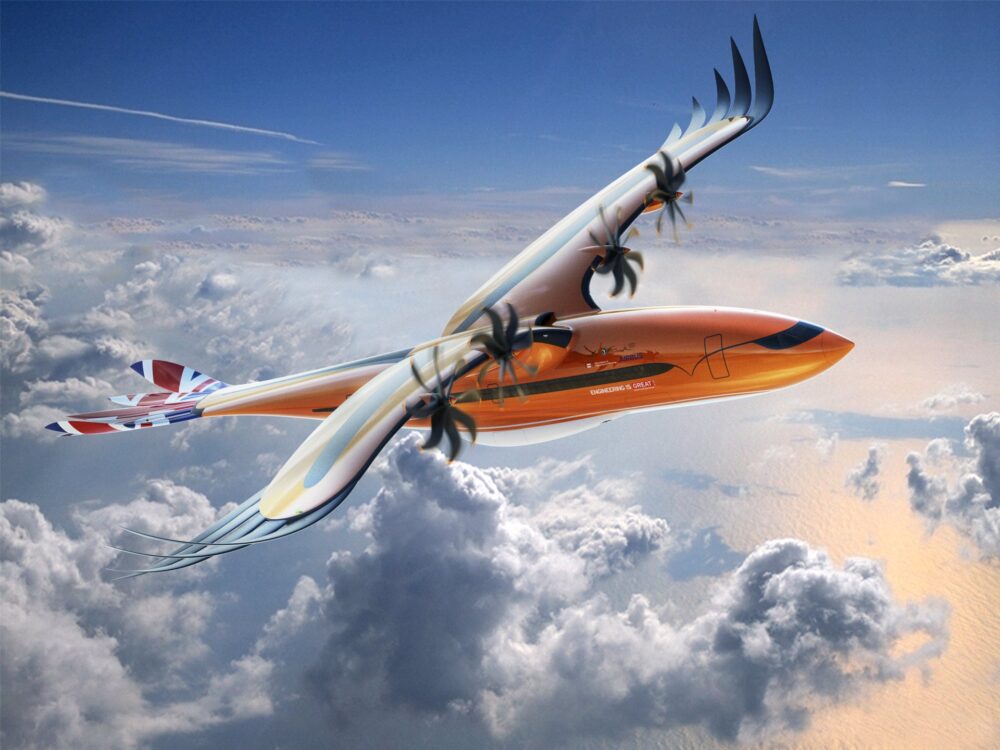Unveiled in 2019, Airbus put out a concept for an airliner that was bird-like in its design. However, Airbus had stated at the time that its work on the concept wasn’t to seriously bring such an aircraft to market. Rather, its goal was to motivate the next generation of aeronautical engineers to think ‘outside the box,’ with the application of various advanced technologies. Let’s revisit this concept and look closer at what Airbus was trying to do.

Cleaner, greener aviation
Made public in July 2019 at the UK’s Royal International Air Tattoo, Airbus’ “Bird of Prey” design was “a theoretical concept for a hybrid-electric, turbo-propeller aircraft for regional transportation.”
“Inspired by efficient mechanics of a bird, it has wing and tail structures that mimic those of a bird of prey, while featuring individually controlled feathers that provide active flight control.” –Airbus
A concept like this would be highly efficient in its energy consumption, especially when compared to the regional aircraft taking to the skies today. More specifically, the Royal Aeronautical Society (a partner with Airbus on the concept) notes the following theoretical specifications of the Bird of Prey:
- Capacity: 80 seats
- Range: 1,500km
- Propulsion: Hybrid-electric
The Royal Aeronautical Society adds that the aircraft “incorporates the latest thinking in aerodynamics and flight control, structures and distributed propulsion to create the greenest ever future airliner,” which could provide a 30-50% reduction in fuel burn compared to equivalent aircraft today.
Stay informed: Sign up for our daily and weekly aviation news digests.
A fictional plane, based on realistic ideas
Airbus underscored that the design was not intended to represent an actual aircraft. Rather, this “Bird of Prey” was a theoretical design based on realistic ideas, providing an insight into what a future regional aircraft could be.
At the core of its unconventional design is a blended wing-to-fuselage joint “that mirrors the graceful and aerodynamic arch of an eagle or falcon.” Airbus noted that this represented the potential of biomimicry- which is “the design and production of materials, structures, and systems inspired by nature.”

The biomimicry concept that Airbus has implemented with the “Bird of Prey” comes from the eagle. Airbus says that the aircraft mimics the eagle’s wing and tail structure, noting that the broad wings found on eagles contribute to faster flight. Birds that soar can provide engineers with a great deal of insight into dealing with wind gusts, and more, Airbus says.
At the end of the day, it’s about inspiring future generations to make aviation more sustainable- “flying cleaner, greener, and quieter than ever before,” says Martin Aston, a senior manager at Airbus. “We know from our work on the A350 XWB passenger jet that through biomimicry, nature has some of the best lessons we can learn about design,” he adds.
Simple Flying has covered a few futuristic concept designs in previous articles: From the SE200, to the Aurora D8, and KLM’s Flying V. While none of these designs have even become full-scale mock-ups yet, hopefully such ideas will bring us towards more efficient jets in the near future.
What do you think about this idea? Will aircraft look drastically different 30 years from now? Or quite similar to the newest jets on the market today? Let us know your thoughts by leaving a comment.
from Simple Flying https://ift.tt/31KjK0U
via IFTTT
Comments
Post a Comment